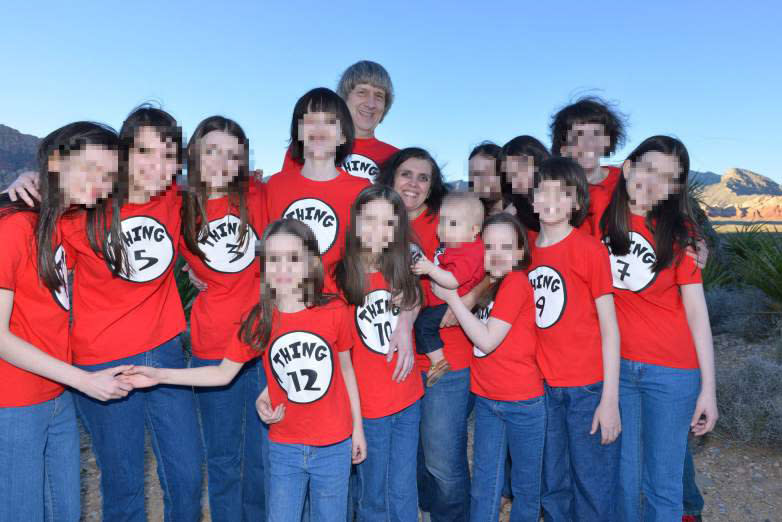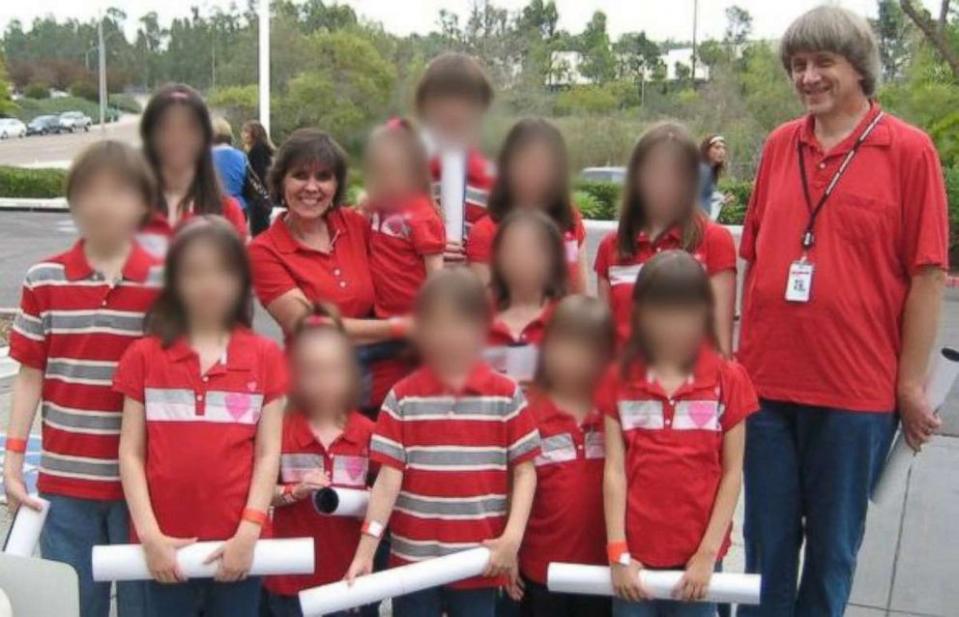The story of the tortured 13 California siblings sheds light on malnutrition and children

The case of the 13 malnourished siblings found shackled and starved in their parents’ California home has shocked the world — and even the doctor overseeing their recovery, who asked, “How does this happen?”
The details of the Sunday discovery — which, according to the Riverside County Sheriff’s Department’s Facebook page, had 13 brothers and sisters ranging in age from 2 to 29 rescued from the Perris home of David Allen Turpin, 57, and Louise Anna Turpin, 49, where they had been “shackled to their beds with chains and padlocks in dark and foul-smelling surroundings” — include many shocking and unfathomable aspects. But among them is the image of the 17-year-old sister, who saved the family by escaping through a window and using an old cell phone to call 9-1-1, and who reportedly looked emaciated and “appeared to be only 10 years old.”
Now the siblings, who include five adults ages 18 to 29, are being treated for malnutrition at the Corona Regional Medical Center.

“It’s that profound when you see what they’re going through,” hospital CEO Mark Uffer, told ABC News Tuesday. “How does this happen?” He added that staff had never seen a case “of this magnitude,“ and “When we first saw them, everybody thought they were children.”
Hospital employees also told the news site that the siblings had likely been mistreated for a long time. “This doesn’t happen over three months or six months,” Uffer said. “When you see malnutrition in people, it’s years.”
They are now in stable condition, undergoing medical evaluations, and the Turpins are charged with child endangerment and torture. Their bail was set at $9 million each.
The World Health Organization defines malnutrition as the body in a state of deficiency as a result of not getting enough nutrients, noting that the condition can display itself as a person having a low height for the individual’s age, a low weight for height, or a low weight for age.

So what goes on physically when a person is deprived of essential nutrients? According to Holly Nicastro, a nutrition researcher with the National Heart, Lung, and Blood Institute, it’s when a slow and dangerous process begins.
“In a case of starvation or under-nutrition, the body prioritizes fueling the brain — that’s the preferred function. Under normal circumstances, the brain uses glucose, which it gets from food,” she tells Yahoo Lifestyle. “But when glucose isn’t available — after two to three days of no food or water — the body will start breaking down fat and convert it to ketone bodies, which the brain can then use for fuel. The brain prefers to use glucose, but if it’s not available, it converts to ketone bodies.”
Then, once a person’s fat stores are depleted (and this depends on how much fat one has to begin with), the body will break down protein from muscles and other tissues, and the amino acids from the protein will be converted to glucose. “After your body takes protein from muscles,” Nicastro says, “that’s death.”
Regarding how the 17-year-old could look 10, she posits, “She might have stunted growth, which means a shorter stature. She’d have less body fat and would look emaciated, and she might have brittle hair or nails, or inadequate growth of hair and nails.” She adds that “there’s no defining feature for malnutrition on a 17-year-old because anyone could have brittle hair. We’d need to know more about the person.”
And though it obviously wouldn’t figure into her visibly physical attributes, it’s possible that the teen would’ve stopped menstruating. “It’s likely,” Nicastro notes. “When your body senses starvation, all resources go toward getting glucose or ketones to fuel the brain.” Thus the reproductive hormones that cause one’s period go into low-drive to conserve energy.

Depending on the health and age of the individual, the average person could survive approximately six weeks without food, depending on whether they have access to water, which is crucial to keep the kidneys and organs functioning, according to Ehsan Ali, MD, a primary-care physician in Beverly Hills, Calif. “It’s likely the siblings were given the bare amount to survive each day — which could be 500 calories — but the food was probably lacking in nutrients,” he tells Yahoo Lifestyle.
In fact the siblings, it was reported on Thursday, were allowed to eat only one rationed meal a day.
As far as the long-term effects of starvation go, says Nicastro, in particular for the teen, “Her social development could be stunted, but it’s hard to know without knowing more details about the person.” In terms of whether or not these kids would act their age, she adds, social and cognitive and emotional development would be stunted as well.
“There are many side effects: Social development, cognitive development, performance in school can be affected. It’s the overall growth and development that are impacted,” she adds. And with prolonged undernutrition, a kid would perform worse in school or have behavioral issues, because the brain runs on glucose, she says.
Another side effect: An increase in susceptibility to infectious diseases, due to a weak immune system, Nicastro notes. “That includes even the common cold.”
Hospital staff is hopeful that with proper nutrition and medical attention, the siblings will recover. As Uffer told ABC News, there is “no rush to push them out the door.”
Read more from Yahoo Lifestyle:
This newly approved drug treats breast cancer like Angelina Jolie’s
How can mothers who welcome babies via surrogate breastfeed?
Follow us on Instagram, Facebook, and Twitter for nonstop inspiration delivered fresh to your feed, every day.

